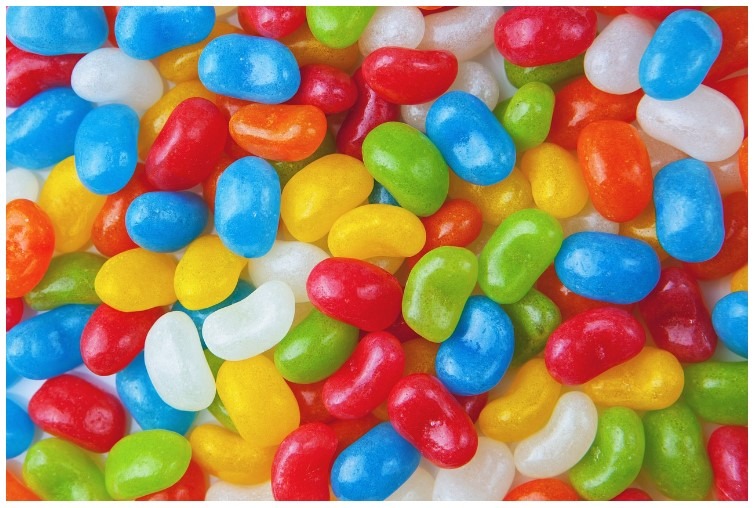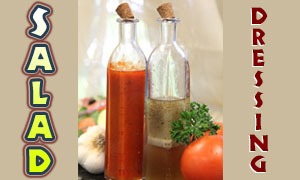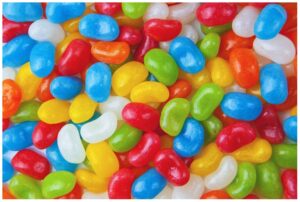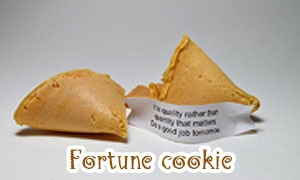The following things in this article are ones that we usually see and use every day (and for special occasions). Sure, we take them for granted, but you will be surprised and stunned to discover how and where these ordinary things came from.
 1. Salad dressing
1. Salad dressing
Your salad will be boring and less appetizing if there’s no Dijon or Thousand Island, right? You don’t think that a salad dressing is far from disgusting.
Oh wait… it does have a yucky ingredient. It’s called xantham gum, which is a type of bacterium. Yes, bacteria! It’s been used for many things, from food to cosmetics. Its chemical composition makes xantham gum ideal to make things thick and creamy like salad dressings. So, would you still look at a salad dressing the same way?
 2. Kotex
2. Kotex
A woman’s best friend during these difficult periods is a disposable sanitary napkin, like Kotex. It was among the first brands to widely and successfully manufacture and market feminine hygiene products such as sanitary napkins, tampons, and pantyliners.
But before, Kotex was very far from what it is today. The company first provided bandages for terribly wounded soldiers during World War I. Yes, your MaxiPads used to dress gaping, bloodied wounds of these soldiers.
3. Graham crackers
Popular crackers that are also used as a crust for cheesecakes, you’d never think that graham crackers are connected to anything else than just culinary.
But its inventor, a Presbyterian preacher named Sylvester Graham, made these crackers because he believed that strictly adhering to a bland diet would hold people back from indulging in all kinds of pleasure — including sex that was not meant for procreation. Mr. Graham was active in the temperance movement during the 1800s, which promoted abstinence from alcohol, sex for pleasure, and anything else decadent.
The first graham crackers were intentionally made to be tasteless. But over the years manufacturers have put other ingredients like sugar and cinnamon to appeal to kids in particular. Well, Mr. Graham would have disapproved of these additives for their tendency to drive people’s unwanted sexual urges.
 4. Jelly beans
4. Jelly beans
Jelly beans are cute, colorful and sweet, and are a favorite of the kids and the kids at heart. But after discovering the lesser-known facts about jelly beans here in this article, would you pop them into your mouth again?
Unless you don’t want to know… shellac plays an important part in the creation of the jelly beans. It’s what makes them shiny and crunchy. Shellac is a commercially-used resinous pigment secreted by lac bugs… bugs! Yep, you read them right.
Jelly Belly combines shellac and beeswax to give its jelly beans the final luster. So yes, you might say you’re almost chewing on insects.
5. Fancy perfumes
Expensive perfumes will make you smell as fresh as a springtime daisy even if you haven’t showered since the beginning of the day. Ironically, something that’s supposed to make you smell sweet comes from something that’s… stinky?
Yes. The fact is that most fancy perfumes — the real deals that are — are composed of several many ingredients, and one of them is called ambergris. Ambergris is a solid, waxy substance secreted from the digestive system of a sperm whale, so it’s like a whale’s vomit or (most likely) poop. It is either black or gray in color.
Freshly caught ambergris, naturally, gives off a fecal odor. But as it ages, it has become sweet-smelling. The ambergris’ chemical properties also enable the perfume to last much longer, even for many hours after you have sprayed it on yourself.
People have sailed to great distances to obtain ambergris, which is found floating on the surface of the water. Also known as “floating gold,” the ambergris fetches up to tens of thousands of dollars! Yes, that proves that not all that glitters is gold… sometimes it is in the form of waste.
 6. Pasta (and spaghetti with meatballs)
6. Pasta (and spaghetti with meatballs)
Although pasta is strongly associated with Italy, would you believe that it didn’t even originate there? First, pasta was introduced to the country by Arab traders during the 5th century A.D. Second, if you’re looking for spaghetti with meatballs in any ristorante in Italy, tough luck for you. The addition of meatballs in the dish is purely an American invention.
7. Piñata
Piñatas are the usual sight at Mexican themed parties; kids in particular absolutely love piñatas. But would you believe that they didn’t even come from Mexico?
Although the piñata’s origins are still debated, the most common notion is that the piñata was brought to Mexico by the Spaniards. But even Spain itself didn’t invent the piñata either, as they derived it from Italians, who in turn had stolen the idea from the Chinese! Piñata has surely crossed several continents to where it is now.
 8. Oreo cookies
8. Oreo cookies
Oreos may be ubiquitous all around the world, but surprisingly it’s not entirely Nabisco’s original product. Oreo cookies are actually a knockoff of the Hydrox cookie, which first came out in 1908 — Oreo followed suit four years later. But Oreo eventually became more popular which led the Hydrox to be thought of like an imitation of the former, although Hydrox is, in fact, the original.
9. Nike shoes
Who in their right mind would make sports shoes with a kitchen appliance? But that’s what Nike exactly did when they first started out — the company used to make its shoes using a waffle maker! Its first shoe aptly named the “Waffle Trainer,” features soles whose grooves are similar to those of a waffle iron.
10. Fortune cookie
Fortune cookies will not only satisfy your belly, but they will also satisfy your hunger for wisdom. Just break the cookie apart, pull out a small piece of paper, and read some aphorism or a prophetic message before eating the cookie itself.
Some additional piece of wisdom there — although the fortune cookie is strongly associated with anything Asian, it wasn’t even invented in the Far East. Actually, fortune cookies first came out in California, United States during the early 20th century.
There is a debate though, as to who first invented it. A Chinese man named David Jung was reportedly the first one to invent the fortune cookie in Los Angeles. However, a Japanese man named Makoto Hagiwara claimed he was the first to serve fortune cookies in San Francisco. Whoever the real inventor behind the fortune cookie is, there’s no arguing that it has made a significant mark on the American foodscape.


 1. Salad dressing
1. Salad dressing 2. Kotex
2. Kotex 4. Jelly beans
4. Jelly beans 6. Pasta (and spaghetti with meatballs)
6. Pasta (and spaghetti with meatballs) 8. Oreo cookies
8. Oreo cookies